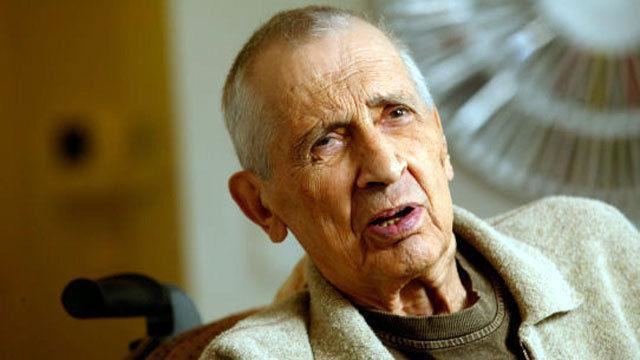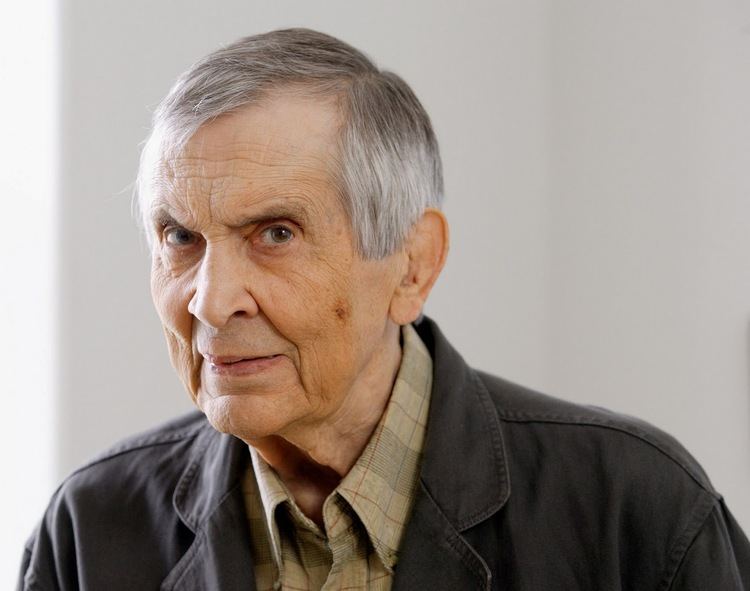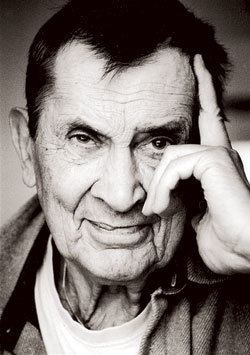Name Einojuhani Rautavaara Role Composer | Children Markojuhani Rautavaara | |
 | ||
Movies Rautavaara: Rasputin: An Opera in Three Acts Nominations Grammy Award for Best Contemporary Classical Composition Compositions Cantus Arcticus, Cantus Arcticus, Symphony No 7, Symphony No 7, Symphony No 8, Symphony No 8, Piano Concerto No 3, Piano Concerto No 3, Ludus verbalis, Ludus verbalis, Aleksis Kivi, Aleksis Kivi, Vincentiana, Vincentiana, Symphony No 3, Symphony No 3, Vincent, Vincent, Our Joyful'st Feast, Our Joyful'st Feast, Die Liebenden, Die Liebenden, Psalm of Invocation, Psalm of Invocation, On the Last Frontier, On the Last Frontier, Pianosarja - Op 1 "Pelimannit": III Klockar Samuel Dikstrom, Pianosarja - Op 1 "Pelimannit": III Klockar Samuel Dikstrom, Toccata - op 59, Toccata - op 59, Etudes - op 42: IV Kvartit, Etudes - op 42: IV Kvartit, The Myth of Sampo: "An eagle! An eagle! An eagle!", The Myth of Sampo: "An eagle! An eagle! An eagle!", The Myth of Sampo: "Whither shall we bear the Sampo", The Myth of Sampo: "Whither shall we bear the Sampo", An Epitaph for Bela Bartok, An Epitaph for Bela Bartok, Pianosarja - Op 1 "Pelimannit": I Narbolaisten braa speli, Pianosarja - Op 1 "Pelimannit": I Narbolaisten braa speli, Divertimento: I Allegro, Divertimento: I Allegro, The Myth of Sampo: "Laskea karahtelevi", The Myth of Sampo: "Laskea karahtelevi", The Myth of Sampo: "O thou lively son of Lempi", The Myth of Sampo: "O thou lively son of Lempi", Etudes - op 42: VI Kvintit, Etudes - op 42: VI Kvintit, Autumn Gardens: III Giocoso e leggiero, Autumn Gardens: III Giocoso e leggiero, Etudes - op 42: II Septimit, Etudes - op 42: II Septimit, Etudes - op 42: III Tritonukset, Etudes - op 42: III Tritonukset, Partita - op 34: I, Partita - op 34: I, Ostrobothnian Polska, Ostrobothnian Polska, Icons - op 6: III The Black Virgin of Blakernaja, Icons - op 6: III The Black Virgin of Blakernaja, Sonata no 2 - op 64 "The Fire Sermon": III Allegro brutale, Sonata no 2 - op 64 "The Fire Sermon": III Allegro brutale, Octet for Winds: II Largo, Octet for Winds: II Largo, The Myth of Sampo: "I call together all my people", The Myth of Sampo: "I call together all my people", Etudes - op 42: I Terssit, Etudes - op 42: I Terssit, The Myth of Sampo: "Wherefore sing not - Vainamoinen?, The Myth of Sampo: "Wherefore sing not - Vainamoinen?, The Myth of Sampo: "Vainamoinen - old and steadfast", The Myth of Sampo: "Vainamoinen - old and steadfast", Divertimento: III Allegretto ma energico, Divertimento: III Allegretto ma energico, Och gladjen den dansar, Och gladjen den dansar, Ballad for Harp and Strings, Ballad for Harp and Strings, Piano Concerto No 2, Piano Concerto No 2, Hammarskjold Fragment - op 84, Hammarskjold Fragment - op 84, Preludes - op 7: No 6 Shivering, Preludes - op 7: No 6 Shivering, Concerto for Flute and Orchestra "Dances with the Winds": II Vivace, Concerto for Flute and Orchestra "Dances with the Winds": II Vivace, Concerto for Harp and Orchestra: I Pesante, Concerto for Harp and Orchestra: I Pesante, Etudes - op 42: V Sekunnit, Etudes - op 42: V Sekunnit, The Myth of Sampo: "Grant - O Jumala - Creator", The Myth of Sampo: "Grant - O Jumala - Creator", Symphony no 1: II Poetico, Symphony no 1: II Poetico, Icons - op 6: VI The Archangel Michael Triumphs over Antichrist, Icons - op 6: VI The Archangel Michael Triumphs over Antichrist, Suite for Strings: III Vivace assai (Alla giga), Suite for Strings: III Vivace assai (Alla giga), Octet for Winds: III Prestissimo, Octet for Winds: III Prestissimo, Sonata no 2 - op 64 "The Fire Sermon": II Andante assai, Sonata no 2 - op 64 "The Fire Sermon": II Andante assai Similar People Leif Segerstam, Jean Sibelius, Leevi Madetoja, Laura Mikkola, Toivo Kuula | ||
Interview with einojuhani rautavaara
Einojuhani Rautavaara ([ˈei̯nojuɦɑni ˈrɑu̯tɑʋɑːrɑ]; 9 October 1928 – 27 July 2016) was a Finnish composer of classical music. He is among the most notable Finnish composers since Jean Sibelius (1865–1957).
Contents
- Interview with einojuhani rautavaara
- Einojuhani rautavaara piano concerto no 1 1969
- Life
- Music
- 1960s
- 1970s
- 1980s and 1990s
- 2000s
- Works
- Discography
- References

Rautavaara wrote a great number of works spanning various styles. These include eight symphonies, nine operas and twelve concertos, as well as numerous vocal and chamber works.

Having written early works using 12-tone serial techniques, his later music may be described as neo-romantic and mystical. His major works include Cantus Arcticus and Symphony No. 7 "Angel of Light".
Einojuhani rautavaara piano concerto no 1 1969
Life
Rautavaara was born in Helsinki in 1928. His father Eino was an opera singer and cantor, and his mother Elsa was a doctor. Both of his parents died before he reached his 16th birthday, and he went to live with his aunt Hilja Teräskeli in a Helsinki suburb.
Rautavaara studied at the Sibelius Academy in Helsinki under Aarre Merikanto from 1948 to 1952. He first came to international attention when he won the Thor Johnson Contest for his composition A Requiem in Our Time in 1954, and the work prompted Jean Sibelius to recommend him for a scholarship to study at the Juilliard School in New York City. There he was taught by Vincent Persichetti, and he also took lessons from Roger Sessions and Aaron Copland at Tanglewood. He graduated from the Sibelius Academy in 1957.
Rautavaara served as a non-tenured teacher at the Sibelius Academy from 1957 to 1959, music archivist of the Helsinki Philharmonic Orchestra from 1959 to 1961, rector of the Käpylä Music Institute in Helsinki from 1965 to 1966, tenured teacher at the Sibelius Academy from 1966 to 1976, artist professor (appointed by the Arts Council of Finland) from 1971 to 1976, and professor of composition at the Sibelius Academy from 1976 to 1990.
He married Heidi Maria Suovanen, an actor, in 1959. They had two sons and a daughter. They separated in 1982 and divorced in 1984, after he fell in love with Sinikka Koivisto, who was 29 years his junior. In 1984 he married Sinikka, who survived him.
After an aortic dissection in January 2004, Rautavaara spent almost half a year in intensive care before recovering and continuing his work. He died on 27 July 2016 in Helsinki from complications of hip surgery.
Music
Rautavaara was a prolific composer and wrote in a variety of forms and styles. His oeuvre can be broadly divided into four periods: early "neoclassical" period of the 1950s, exhibiting close ties to tradition; avant-garde and constructivist stage of the 1960s, when he experimented with serial techniques, but abandoned them later in the decade; "neo-romantic" period of the late 1960s and the 1970s; and an eclectic, "post-modern" compositional style in which he blended a wide spectrum of stylistic techniques and genres. A recurring label given to his opus is "mysticism", for his fascination with metaphysical and religious subjects and texts. (Several of his works have titles which allude to angels.)
His compositions include eight symphonies, 14 concertos, choral works (several for unaccompanied choir, including Vigilia (1971–1972)), sonatas for various instruments, string quartets and other chamber music, and a number of biographical operas including Vincent (1986–1987, based on the life of Vincent van Gogh), Aleksis Kivi (1995–1996) and Rasputin (2001–2003).
1960s
Along with Erik Bergman, Rautavaara was one of pioneers of serial composing in Finland in the early 1950s, although in the end he completed only several serial works. His most important works from the period are the Third and Fourth Symphony, and the opera Kaivos (The Mine), which saw only a television production in 1963, but was a source of material for string orchestra pieces Canto I (1960) and Canto II (1961) and the Third String Quartet (1965). Even his serial works from the period carry obvious romantic and post-expressionist notes stylistically closer to Alban Berg and Anton Bruckner than more straightforward serialists such as Pierre Boulez. Rautavaara himself referred to the Third as the "Bruckner's symphony".
In the mid-1960s, Rautavaara fell into a creative crisis with serialism, noticing that the composition method was immensely laborious and its distance from the outcome too large. He found a resolution towards the end of the decade, when he began to explore different styles as he had earlier done in the Third Symphony. The Bach-influenced Cello Concerto No. 1 and Debussy-influenced Anadyomene opened his creative deadlock. More eclectic works started to emerge, whose style loans and compositional techniques over time became characteristic of his style. Its hallmarks included three-chord-based, often modal harmonies, ringing softly romantic orchestrals, modernism springing from the new play modes, and finally the return of the twelve-tone passages embedded into the musical texture.
1970s
The 1970s were Rautavaara's most productive period. In a short time he composed an extensive body of music, most of which has withstood the test of time. The softly-sounding new style was noticed by choirs, who commissioned a number of choral songs from the composer. His major choral works Vigilia and True and False Unicorn were made during 1971. Cantus Arcticus followed immediately after, in the beginning of 1972, and in the summer he composed an extensive score for male choir, A Book of Life.
In the 1970s Rautavaara started working more extensively on operas. Comical opera-musical Apollo contra Marsyas, made in 1970 in cooperation with librettist Bengt V. Wall turned out to be a disappointment. After that, based on motifs from Kalevala he composed The Myth of Sampo (1974/1983) and Marjatta, lowly maiden (1975). His mature style in operas was exhibited later, in Thomas (1985), while subsequent Vincent (1987), The House of the Sun (1991) earned him notable international success. His later operas include The Gift of the Magi (1994), Aleksis Kivi (opera) (1997) and Rasputin (opera)''Rasputin'' (2003).
A number of his works have parts for magnetic tape, including Cantus Arcticus (1972, also known as Concerto for Birds & Orchestra) for taped bird song and orchestra, and True and False Unicorn (1971, second version 1974, revised 2001–02), the final version of which is for three reciters, choir, orchestra and tape.
1980s and 1990s
In the second part of the 1970s, Rautavaara gradually turned toward stylistic synthesis, evident in the Organ Concerto "Annunciations" (1977) and the Violin Concerto (1977), and especially in Angels and Visitations (1978) for orchestra, one of his most fascinating works, the first from the "Angel" series, which also includes the Fifth Symphony, whose working title was "Monologue with Angels", double-bass concerto Angel of Dusk in 1980, and the Seventh Symphony "Angel of Light".
His opera Thomas (1985) marked the beginning of his mature operatic style, combining neo-romantic harmonies with aleatoric counterpoint, twelve-tone rows and different modal systems. The libretto, written by Rautavaara himself, tells the story of 13th-century Bishop of Finland as experienced by the protagonist himself, again using Kalevala motifs. A similar first-person narrative is used in the next opera Vincent (1987) devoted to Vincent van Gogh. Along with The House of the Sun (1991), the operas earned him notable international success.
His most widely acclaimed Seventh Symphony earned a Cannes Classical Award and a Grammy nomination for the recording by the Helsinki Philharmonic Orchestra conducted by Leif Segerstam.
Apart from the Angel of Light, his notable instrumental works from the period include the Sixth Symphony "Vincentiana" (1992), based on Vincent; the Third Piano Concerto "Gift of Dreams" (1998), commissioned by Vladimir Ashkenazy; orchestral work Autumn Gardens (1998), commissioned by the Scottish Chamber Orchestra; and the Eighth Symphony "The Journey", commissioned by the Philadelphia Orchestra.
2000s
Rautavaara's later works include orchestral works Book of Visions (2003–2005), Manhattan Trilogy (2003–2005) and Before the Icons (2005) which is an expanded version of his early piano work Icons. In 2005 he finished a work for violin and piano called Lost Landscapes, commissioned by the violinist Midori Goto. Orchestral work A Tapestry of Life was premiered by the New Zealand Symphony Orchestra in April 2008, directed by Pietari Inkinen. Rautavaara wrote a percussion concerto called Incantations for Colin Currie in 2008 and a Second Cello Concerto for Truls Mørk in 2009. In 2010 Rautavaara's "Christmas Carol" was commissioned and performed by the men and boys choir of King's College, Cambridge (UK) for their annual Festival of Nine Lessons and Carols. In 2011 Rautavaara completed two larger-scale compositions: Missa a Capella (premiered in the Netherlands, November 2011) and a work for string orchestra, Into the Heart of Light, which premiered in September 2012.
Rautavaara did not live to see the first opera stage première of Kaivos, the uncensored version, which took place 21 October 2016 in Budapest, Hungary.
Works
Discography
Almost all of Rautavaara's works have been recorded by Ondine. Some of his major works have also been recorded by Naxos. An album of vocal works called "Rautavaara Songs" was recorded by the Swedish label BIS Records.
